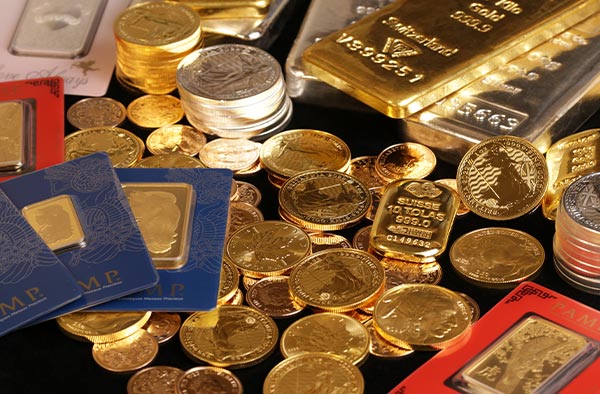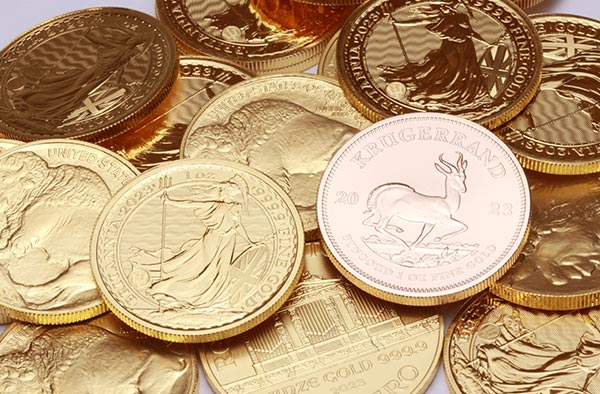How to Buy Gold - The Complete Guide to Gold Investment
Introduction to understanding Gold as an Investment
Gold has been traded as a precious metal for centuries and continues to be bought and sold globally today. This comprehensive guide explains the fundamentals of the gold market, including different forms of gold, common trading practices, historical price movements, and the various factors that can influence gold prices.
Whether you're researching gold for potential purchase, interested in learning about gold as a tradable commodity, or simply wanting to understand how the gold market works, this guide provides factual information to help clarify the terminology and mechanics of gold trading.
Why Invest in Gold?
Gold offers several distinct advantages that have stood the test of time:
- Protection against inflation - Gold historically maintains value when currency buying power decreases
- Portfolio diversification - Gold often moves differently from stock markets, potentially reducing overall risk
- Physical asset - Unlike digital investments or paper assets, physical gold exists as a tangible item that you can hold, which some people prefer during times of economic uncertainty
- Long-term value - Gold has been valued by different societies for thousands of years

Gold Fundamentals - What You Need to Know
Key Properties of Gold
Gold (Au on the periodic table, atomic number 79) stands apart from other metals with remarkable density—weighing approximately 19,300kg per cubic metre. Its unique characteristics include:
- Extraordinary resistance to corrosion and tarnishing
- Exceptional malleability and electrical conductivity
- That unmistakable warm yellow sheen that has defined luxury for centuries
The durability of gold means virtually all gold ever mined throughout human history remains in circulation today. Experts estimate roughly 190,000 tonnes of above-ground gold currently exists worldwide, with recycled gold making up about 30% of the global supply. China currently leads global gold production, contributing 12% of newly mined gold, while Asia as a whole accounts for nearly a fifth (19%) of fresh gold entering the market.
Understanding Gold Measurements
Troy Ounces: Since the 16th century, the troy ounce has been the universal standard for measuring gold. One troy ounce equals precisely 31.1035 grams—slightly heavier than the familiar ounce used for everyday items.
Gold Price Quotation: Across global markets, gold is universally quoted in US dollars per troy ounce, creating a standardised foundation for international trading.
Carats: This measurement reflects gold's purity, expressed as parts out of 24:
- 24 carat (999.9) - The purest form at 99.99%, nicknamed "four nines"
- 22 carat (916.6) - 91.6% pure gold, popular for some investment coins
- 18 carat (750) - 75% pure gold, commonly used in higher-end jewellery
- 14 carat (585) - 58.5% pure gold, balancing value and durability
- 9 carat (375) - 37.5% pure gold, the most widespread standard in UK jewellery
The purest gold (24K) carries the highest value but is remarkably soft. Lower carat gold incorporates alloys (usually copper or silver) that boost durability but reduce intrinsic value.
Types of Gold Investments
Gold Bullion: Bars and Coins
Bullion refers to physical gold in its investment-grade form—typically bars or coins containing at least 99.5% pure gold. True investment bullion must carry authentication from a recognised refiner and display clear purity markings.
Advantages of Choosing Bullion:
- No VAT payable in the UK, maximising your investment
- Easy to buy and sell worldwide with many dealers available
- Instantly recognisable and tradeable worldwide
- Available in various weights to suit different budgets
Popular Gold Bar Choices: The Royal Mint, Metalor, PAMP and Umicore bars enjoy strong reputations among serious investors.
Sought-After Gold Coins:

Tax Benefits Worth Noting: For UK investors, British coins including Gold Sovereigns, Half Sovereigns and Britannia coins offer a significant advantage—they're exempt from Capital Gains Tax, making them particularly attractive for long-term wealth preservation.
Gold Jewellery
While jewellery accounts for roughly two-thirds of annual gold demand globally, it generally makes for a poor investment vehicle due to:
- Typically lower purity (usually between 9-22 carat)
- Substantial markups over the actual gold content value
- Extra costs for craftsmanship, design and brand premiums
India alone drives approximately 27% of worldwide gold jewellery demand, largely through cultural traditions surrounding weddings and important celebrations.
Alternative Gold Investments
Exchange-Traded Funds (ETFs): These allow you to invest in gold via traditional stock exchanges without needing to store physical metal.
Gold Mining Shares: Buying stock in companies that extract and process gold offers leveraged exposure to gold prices, though with additional business risks.
Spread Betting: This approach lets you speculate on gold price movements without owning the physical metal, potentially magnifying both gains and losses.
Gold Price Dynamics
What Determines Gold Prices? Gold prices constantly shift based on a complex web of influences:
- Economic indicators worldwide - Including inflation figures, interest rate decisions, and GDP growth reports
- Strength of major currencies - Especially the US dollar's performance
- Market psychology - How confident investors feel about traditional markets
- Central bank policies - Particularly regarding gold reserves and monetary easing
- Global tensions - From trade disputes to regional conflicts
- Supply-demand balance - Mining production, recycling rates, and jewellery/investment demand
Gold Price Terminology
Understanding the different ways gold prices are quoted and referenced is essential for anyone interested in the gold market. Here are the key terms you'll encounter when researching gold prices:
Spot Price: What you'd pay for immediate delivery of gold right now—the current market price.
Fix Price: The global benchmark price for unallocated gold delivered in London. Prices are set twice daily, at 10.30am and 3.00pm on trading days and are administered by ICE Benchmark Administration Limited.
Futures Price: The predetermined price for gold to be delivered on a specific future date, used for both hedging and speculation.
Historical Gold Price Trends
Gold has witnessed remarkable price journeys throughout modern history:
- 1970s to 1980: Steady climbing to approximately $700 per ounce
- 1980-1982: Dramatic 57% plunge to around $300 per ounce
- 1982-2005: Relatively range-bound between $250-$500 per ounce
- 2005-2011: Meteoric rise during the global financial meltdown, reaching an all-time high of $1,917.90 in August 2011
- Recent years: Sustained high valuations with ongoing volatility
To put this in perspective, gold priced at £110 per ounce in 1978 has increased to over £2,500 per ounce by 2025—representing over a 1,600% nominal increase (though actual returns must account for inflation's impact over that period).
Gold Investment Strategies
Short-Term Trading
For those drawn to more active participation in gold markets:
- Keep a watchful eye on daily price movements and breaking gold news
- Pay attention to scheduled economic announcements that typically move markets
- Factor in seasonal patterns affecting demand (like Chinese New Year or Indian wedding season)
- Begin with a modest sum (our typical bullion orders average about £1,700)
- Aim to buy during price dips and take profits during rallies
Long-Term Wealth Preservation
For investors focused on safeguarding wealth across decades:
- Consider dedicating around 5-15% of your investment portfolio to physical gold
- Focus on investment-grade bullion rather than collectible or numismatic items
- Maximise tax advantages available in the UK (VAT-free bullion, CGT-exempt British coins)
- Ensure secure storage through professional vaulting services or properly insured facilities
- Maintain perspective during inevitable price fluctuations by focusing on gold's long-term record
Buying and Selling Gold: Practical Guide
How to Buy Gold:
- Do your homework on current prices using live charts and trusted comparison resources
- Establish your budget and decide your preferred form (smaller bars/coins for beginners, larger bars for significant investments)
- Select a dealer with solid credentials and transparent pricing structures
- Verify authenticity through proper hallmarks and accompanying certification
- Consider how you'll keep it safe (home storage, bank deposit box, or allocated professional storage)
- Maintain proper documentation proving ownership and authenticity

How to Sell Gold
When the time comes to liquidate some or all of your gold holdings:
- Shop around for competitive offers from multiple reputable dealers
- Be strategic about timing if circumstances allow
- Have your authenticity documentation ready to streamline the process
- Understand any tax implications before completing the sale
Calculating Gold Value
To work out what your gold is worth, you'll need:
- The purity level (carat) of your gold
- Accurate weight in troy ounces or grams
- The latest spot price
While numerous online calculators can provide ballpark estimates, remember that actual buying and selling prices typically differ from the spot price by roughly 3-5% due to dealer premiums and market conditions.
Factors Affecting Future Gold Prices
Economic Indicators
- Interest rate environment: When rates fall, gold typically becomes more attractive as competing fixed-income investments yield less
- Inflation trends: Rising costs-of-living often drive investors toward gold as a purchasing power preserver
- Currency valuations: A weakening dollar frequently correlates with strengthening gold prices
Global Demand Factors
- Central bank activity: Strategic reserve diversification among national banks
- Investment flows: Patterns of money moving into or out of gold-backed ETFs and physical bullion
- Jewellery market health: Particularly consumer appetite in India and China
- Technological applications: Growing use in electronics, medicine and emerging technologies
Supply Considerations
- Mining output changes: Production challenges at major mining operations
- Recycling volumes: Higher prices tend to bring more "scrap" gold to market
- Production cost floors: Rising extraction expenses establish practical minimum prices
Conclusion - Is Gold Right for Your Investment Portfolio?
Gold offers distinct advantages as part of a thoughtfully balanced investment approach, especially for those seeking:
- A buffer against economic storms and uncertainty
- Protection from inflation's erosion and currency debasement
- Diversification to reduce overall portfolio volatility
- A tangible asset with enduring global recognition and liquidity
While no investment comes without its risks, gold's remarkable history spanning thousands of years as humanity's preferred store of value makes it worthy of consideration for most serious investors. The fundamental knowledge covered in this guide should help you make more informed decisions about whether—and how—to include gold in your own financial strategy.
Ready to explore gold investment options tailored to your specific goals? Our team of specialists is available to offer personalised guidance on selecting the right gold products for your needs. Get in touch today to begin your gold investment journey with confidence.
Disclaimer: This information is provided for educational purposes only. Investors should conduct their own analysis and seek independent financial advice before investing. The value of investments can fall as well as rise, and past performance is not a reliable indicator of future results.
Frequently Asked Questions
What is the best form of gold to buy for investment?
For serious investors, investment-grade gold bullion (bars and coins) of at least 99.5% purity offers the most straightforward exposure to gold prices with minimal dealer premiums. British investors have an additional advantage with sovereign gold coins like Britannias, which come with the significant perk of Capital Gains Tax exemption.
How do different investors approach gold allocation?
There are many perspectives on gold allocation within broader holdings. Some published portfolio models and research papers discuss gold allocations ranging from 5-15%, but there is no universal approach. Individual circumstances, goals, risk considerations, and market views all influence personal decisions about gold ownership. Anyone considering gold purchases should consult with a qualified financial advisor regarding their specific situation.
Where is the safest place to store gold?
For substantial gold holdings, professionally managed allocated storage in secure vaults represents the gold standard for security, typically with comprehensive insurance coverage. Smaller quantities might be reasonably kept in a quality home safe, while bank safety deposit boxes offer a middle-ground solution, though they sometimes lack specific insurance for precious metals.
Will gold maintain its value during economic crises?
The historical record shows gold has generally preserved purchasing power impressively during economic downturns, currency collapses, and inflationary periods. During the 2008 global financial crisis, for instance, gold prices climbed dramatically even as many other assets plummeted, reinforcing its reputation as a safe harbour during financial storms.
Is gold VAT-free in the UK?
Investment-grade gold meeting the minimum 99.5% purity threshold is indeed exempt from VAT in the UK. This valuable tax advantage applies to gold bars and qualifying investment coins. However, gold jewellery, collectibles, and lower-purity items remain subject to the standard VAT rate.
How do I verify the authenticity of gold?
Genuine investment-grade gold should:
- Come with proper certification documentation
- Meet exact weight specifications within tight tolerances
- Display clear purity stamping (such as 999.9) For significant investments, professional verification might be worthwhile, or simply purchase exclusively from well-established dealers with proven track records.
What factors most influence the gold price?
The key drivers affecting gold prices include:
- Central bank interest rate policies and monetary stance
- Current inflation readings and future expectations
- Relative strength or weakness of major currencies, particularly the US dollar
- Geopolitical tensions, conflicts, and economic uncertainty
- Gold buying and selling patterns among central banks
- The balance between mining production and recycling versus demand
Is it better to buy gold online or in person?
Both approaches have their merits. Online purchasing typically offers better pricing due to reduced overhead costs, broader selection options, and easy comparison shopping. Face-to-face transactions allow physical inspection before purchase and immediate possession. The crucial factor, regardless of method, is selecting a dealer with impeccable reputation, transparent pricing practices, and proper authentication processes.
Disclaimer: This information is provided for educational purposes only. Investors should conduct their own analysis and seek independent financial advice before investing. The value of investments can fall as well as rise, and past performance is not a reliable indicator of future results.



















